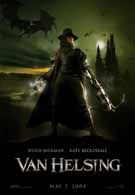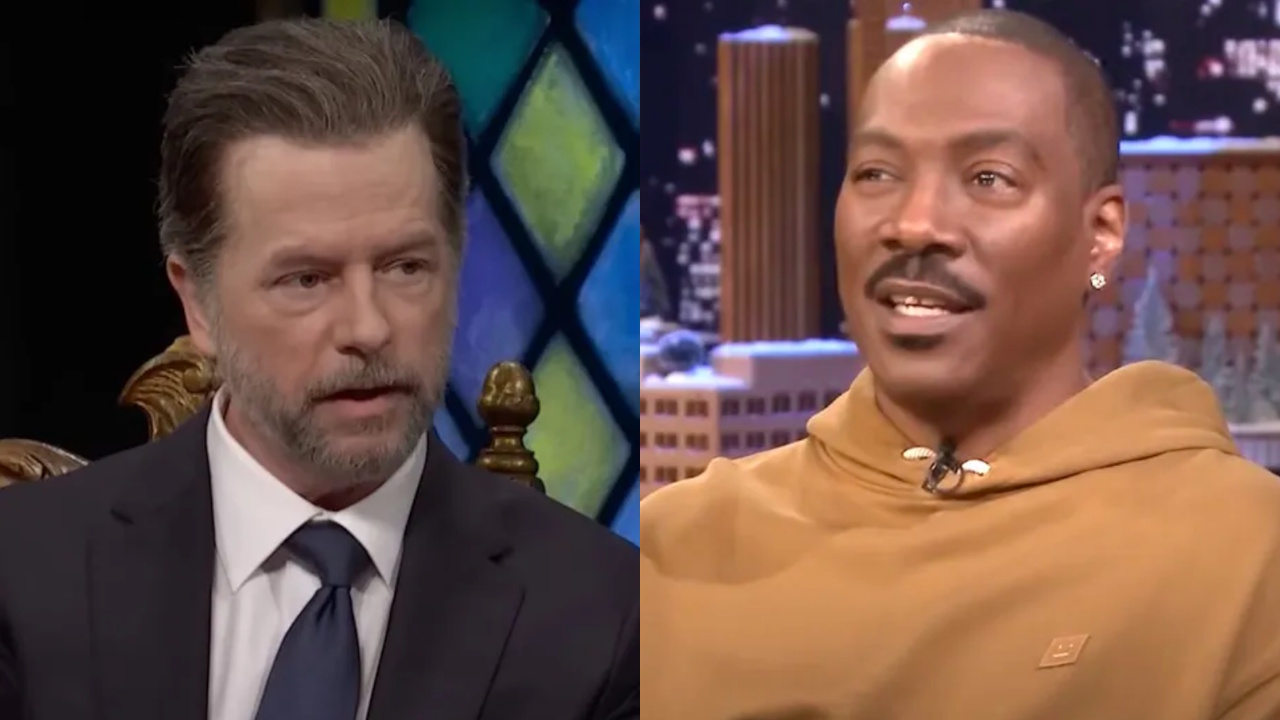Van Helsing is a fun summer movie that’s taking flack for failing to be a deep moving character study or for not showing proper reverence to the classic monster characters it throws into its cauldron. But when it comes to classic monsters as big budget entertainment, Director Stephen Sommers proves yet again that he knows how to please.
The movie is assembled like a patchwork quilt, with various elements from monster legend pieced together and dropped in the small village of Transylvania. It’s there that monster hunter Gabriel Van Helsing (Hugh Jackman) is sent by the church to stop the dastardly plots of Dracula and his luscious vampire brides. It’s all driven by Dracula’s desperate need to procreate, a desire which makes a lot of sense when you see his three lovely wives. To do so, he needs to discover the secret of Frankenstein’s monster, life from lifelessness is the key. Because of course, since vampires are technically dead they cannot give birth to live progeny.
Van Helsing himself has seen nearly as many incarnations as Dracula, but this time he’s not just hunting vampires and he’s undergone a slight name change. Instead he’s a tool of the Church, their go-to guy, a medieval version of James Bond complete with requisite gadget man played David Wenham, going against his Lord of the Rings leading man type to play a mousey friar named Carl.
After a brilliant black and white opening, in which the Universal logo dissolves in flame and villagers hunt down Frankenstein with burning torches, we switch to Van Helsing on assignment in London. There he tracks down Mr. Hyde, whom he is supposed to capture. Of course things don’t quite go to plan, so Van Helsing is whisked back to the Vatican where he’s assigned to Transylvania and the evil plots of Count Dracula.
There, after narrowly avoiding the same mob that did Frankenstein in, he meets a gorgeous gypsy princess named Anna (Kate Beckinsale), who represents the last in nine generations of family sworn to defeat and kill Count Dracula. If she fails, then none of her family will ever make it out of purgatory. Time is running out and Dracula’s tasty brides are after her blood. Anna’s suspicion eventually turns to trust and the two team up to eliminate the Count. Conveniently, should the dark lord fall, so will all of his vampire creations.
Van Helsing is a movie in love with monsters and in love with the movie-going experience. For Sommers this project is a gigantic “what if” that throws all the characters he loved as a kid into one big mix, just to see who comes out on top. Because of that, everything is bigger in Van Helsing, Sommers is never content to settle for subtlety. When Dracula goes to bite into someone, he doesn’t just pop out a pair of fangs and bite a neck. His entire face distends to reveal row after row of vicious, blood sucking teeth. Frankenstein isn’t just a big lumbering brute; he’s powered by bursts of electricity, with glowing baubles all over his body to keep him trudging along. His face isn’t just a cobbled together mess; it’s poorly connected and tends to come loose with just a smack. Characters never just run down a hallway… why run when they can swing? Sommers never settles for simple segue or basic templates. Van Helsing is all about delivering MORE in a way that works here, but so often falls flat in less capable hands.
Like Sommers previous two films (The Mummy and The Mummy Returns), Van Helsing is a CGI-driven experience. Done poorly, computer effects get pretty boring and over-reliance on them takes all the weight out of exciting action sequences. Yet, used properly they can create visual magic and Sommers capably does that here. All the effects aren’t perfect and maybe I’d have rather seen a couple of guys in prosthetic monster suits duking it out than sitting through the not quite believable CGI-Dracula versus CGI-Wolfman fight. But overall, Van Helsing’s effects work in a resounding and entertaining way. They operate best in generating stunning scenery, like a beautifully detailed ball in Budapest or the dingy world of Castle Frankenstein.
Your Daily Blend of Entertainment News
The plot moves fast and the movie is loud and breakneck paced. It’s probably true that some of Sommers’ screenplay may not even quite make sense. But what makes it to the screen is a wonderfully wild summer movie that’s restrained itself just enough to avoid becoming another special f/x overkill. Sommers has turned out a capably assembled picture that delivers all the fun you could wish for in a modern monster flick.

